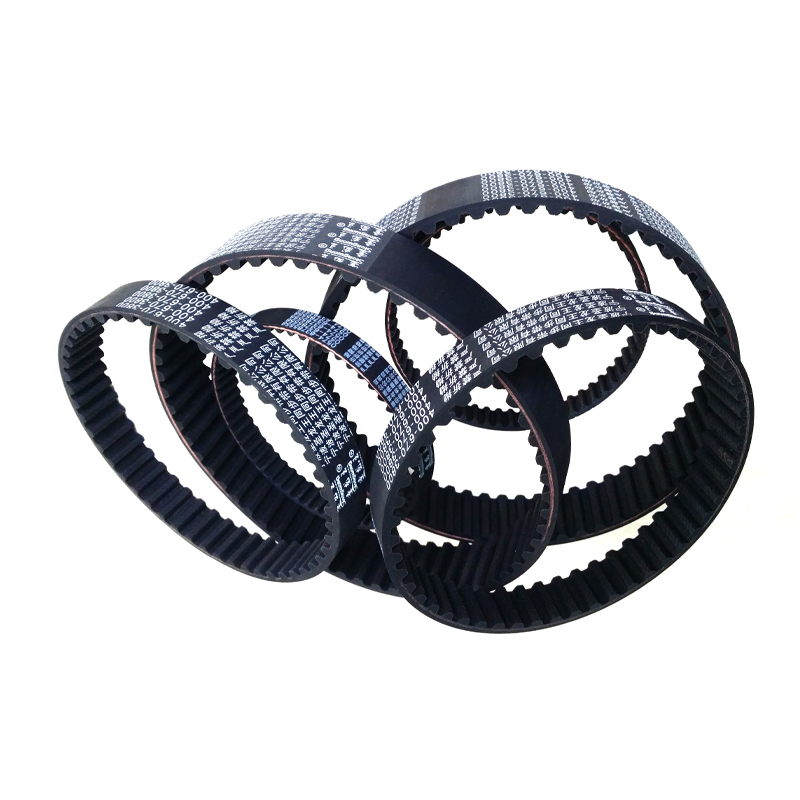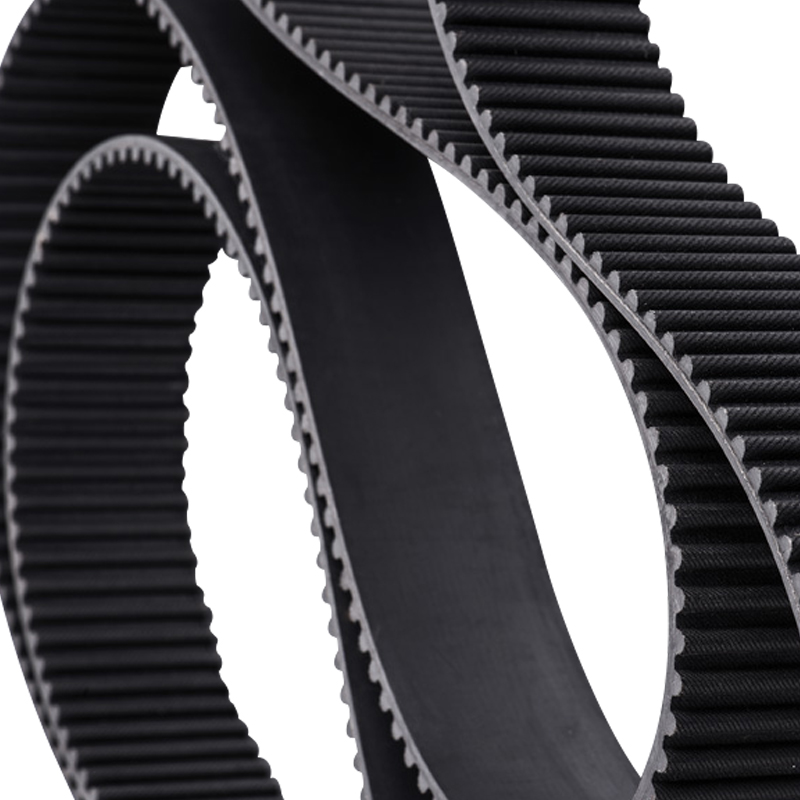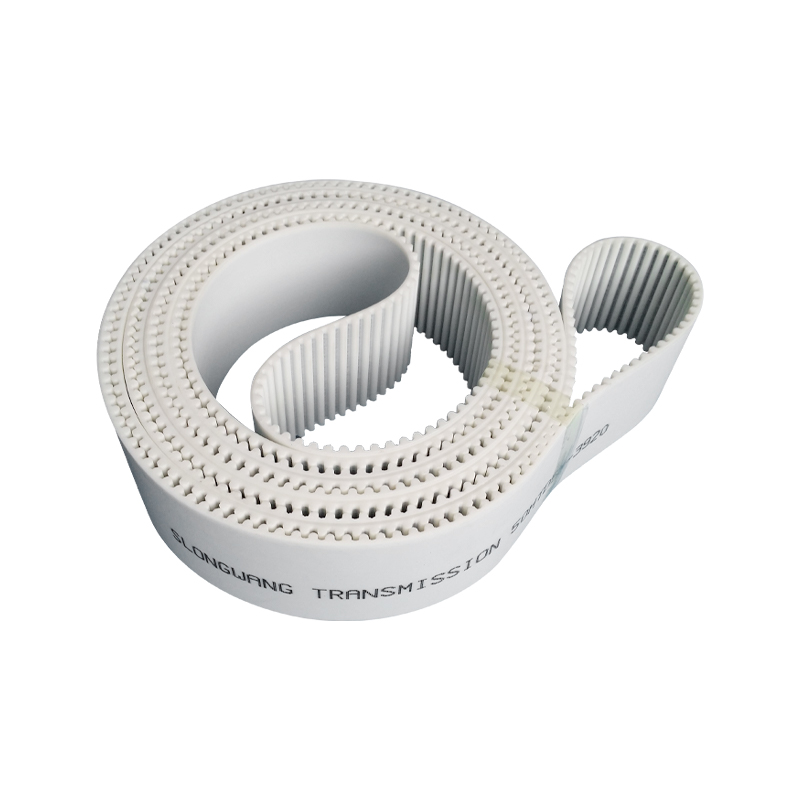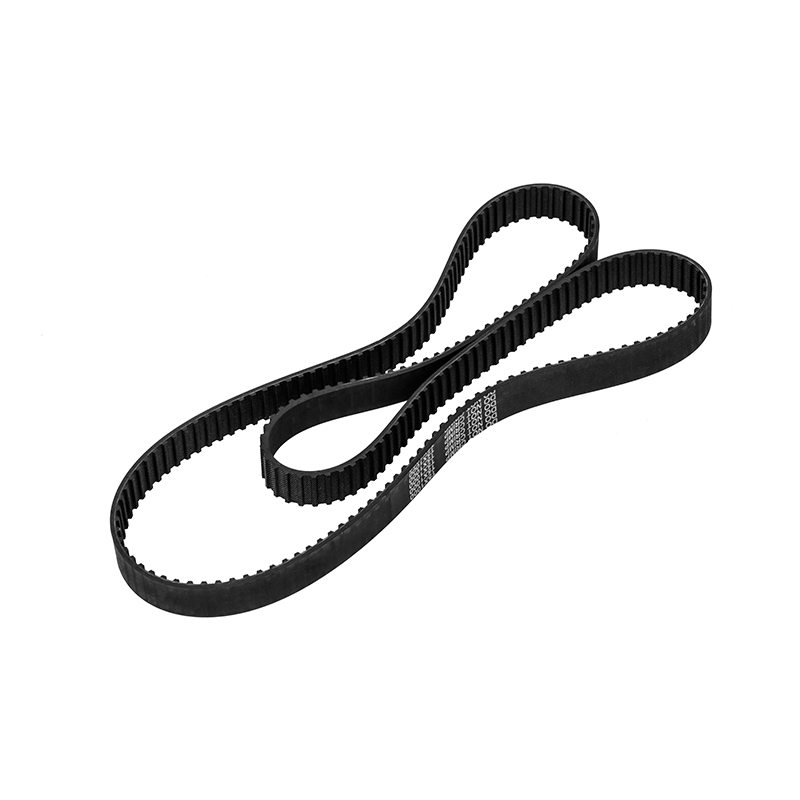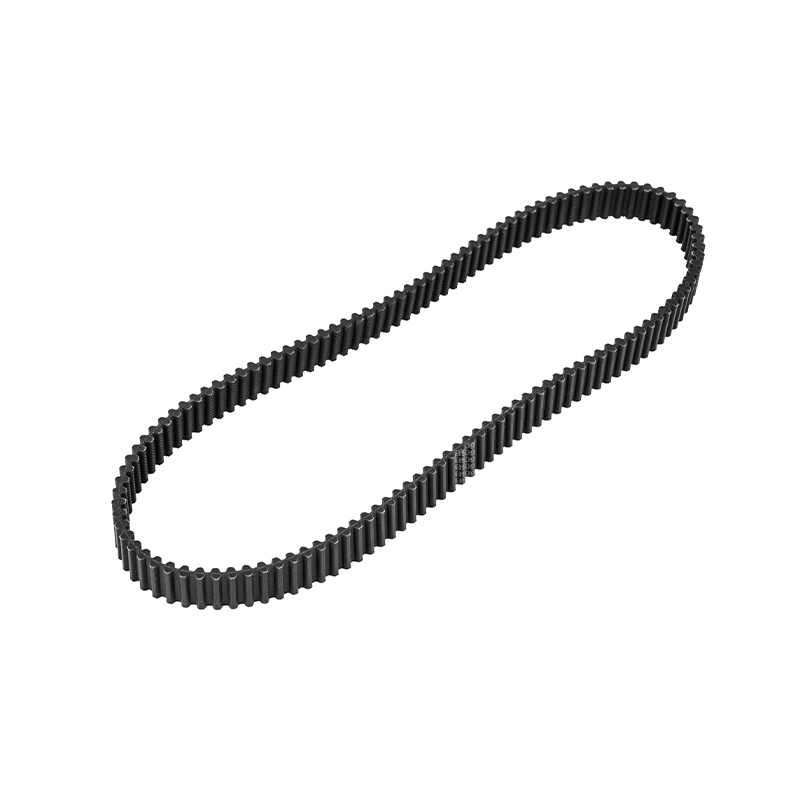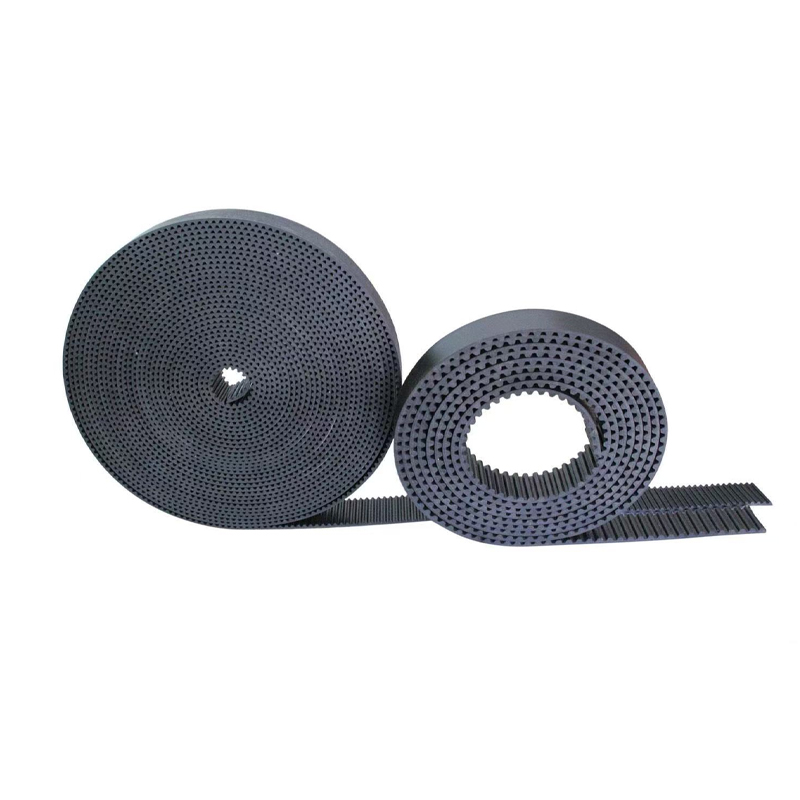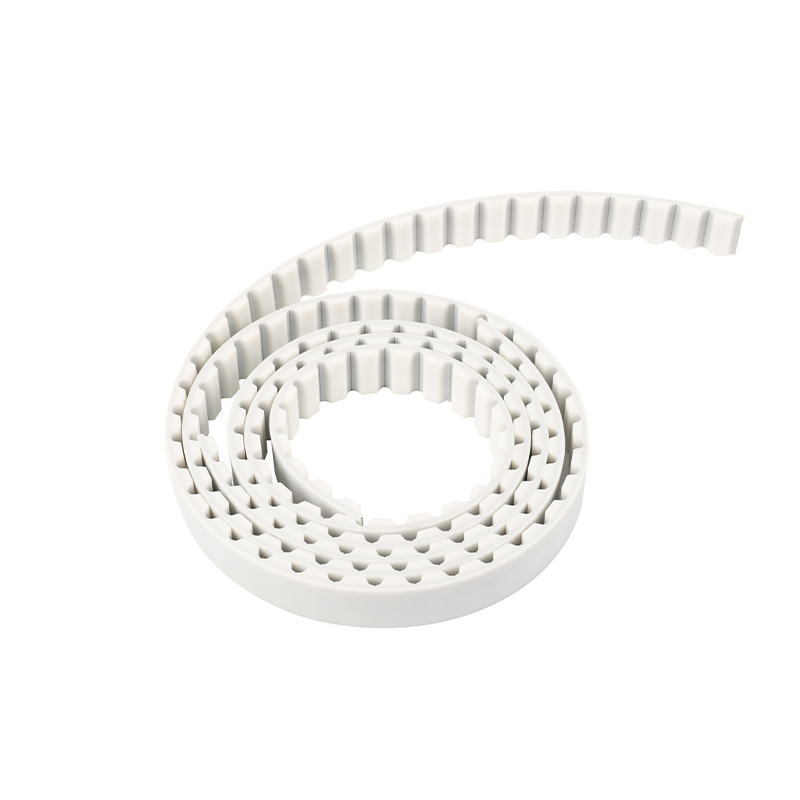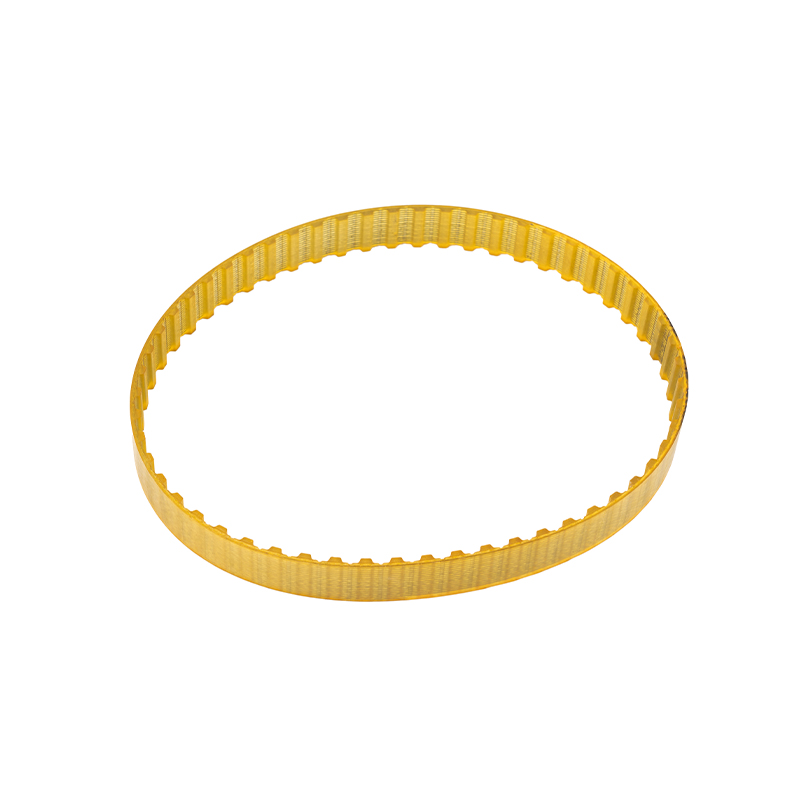How does PU Opening Timing Belt maintain excellent wear resistance in high-load transmission?
2025-04-30
Material characteristics: Molecular wear-resistant defense of polyurethane
As the base material of synchronous belts, polyurethane (PU) has a unique molecular structure for its wear resistance: the hard segment (rigid chain formed by isocyanate and chain extender) and the soft segment (flexible chain composed of polyol) are arranged alternately through chemical bonds to form a microphase separation structure similar to "reinforced concrete". When the synchronous belt is subjected to high loads, the hard segment bears the shear stress and the soft segment absorbs the impact energy. The synergistic effect of the two reduces the surface friction coefficient of the material to 0.2-0.3 (about 0.6-0.8 for rubber materials), significantly reducing friction heat generation and wear.
In terms of chemical stability, the carbamate group (-NH-COO-) in the PU molecular chain has a steric hindrance effect, which can shield active sites such as ester bonds and ether bonds, so that it can still maintain the integrity of the molecular chain when it comes into contact with mineral oil, hydraulic oil, and weak acid and alkali environments. Experimental data show that under the ASTM D4060 standard, the Taber wear of PU Opening Timing Belt at a load of 1000g and a speed of 1000r/min is only 0.05-0.08g/1000r, which is much lower than the 0.2-0.3g/1000r of chloroprene rubber (CR).
In terms of temperature adaptability, PU materials achieve wide temperature range performance optimization by adjusting the ratio of soft and hard segments. For example, at a low temperature of -30°C, the crystallinity of the soft segment is reduced, so that the material still maintains an elastic modulus of more than 15%, avoiding brittle fracture; at a high temperature of 80°C, the cross-linking density of the hard segment is increased by 30%, preventing creep caused by softening of the material. Tests on the timing system of a certain automobile engine show that after 1000 hours of continuous full-load operation, the tooth height wear of the synchronous belt using modified PU is only 0.03mm, meeting the industry's life standard of ≤0.1mm.
Structural design: multi-level anti-wear system engineering
The anti-wear performance of synchronous belts does not rely solely on materials. Its composite structure achieves multiple protections through layered design:
Tensile layer: high-carbon steel wire or aramid fiber braided layer with a diameter of 0.15-0.35mm is used, and its tensile strength can reach 2500-3500MPa, which is 5-8 times that of ordinary fibers. The steel wire core forms a cross-mesh structure through a spiral winding process. When subjected to transmission tension, the uniformity of stress distribution is improved by 40%, avoiding material fatigue peeling caused by local stress concentration. A heavy machinery case shows that the synchronous belt with a double-layer cross-wire core has a service life extended to 2.3 times that of traditional products under a load of 5 tons.
Tooth surface reinforcement layer: 0.1mm thick nylon 66 coating is embedded in the tooth top and tooth side. Its self-lubricating properties reduce the dynamic friction coefficient to 0.15, and the orientation arrangement of molecular chains is used to enhance the tear resistance. In the DIN 53515 standard pendulum impact test, the belt teeth can withstand 8J impact energy without breaking, which is 120% higher than the uncoated product.
Back protective layer: Through the secondary injection molding process, a 0.5mm thickened polyurethane layer is compounded on the back of the belt body, and its Shore hardness is 5-8 Shore A higher than the base material, forming a wear-resistant buffer pad. In the sand and dust simulation experiment, this structure reduces the dust intrusion depth by 70%, avoiding abrasive wear caused by particle embedding.
Process optimization: micro-precision control and interface strengthening
The improvement of wear resistance of PU Opening Timing Belt requires the control of key processes from the source of manufacturing:
Mold temperature control technology: A dual-zone temperature control injection mold is used to control the melt flow channel temperature at 180-200℃ (±2℃ fluctuation range), so that the polyurethane can complete uniform crystallization in the mold cavity. This process can eliminate the internal stress concentration caused by temperature gradient in traditional processes, reduce the fluctuation of belt shrinkage rate to less than 0.15%, ensure the perfect meshing of belt teeth and pulleys, and reduce the impact wear caused by meshing clearance.
Steel wire pretension control: Apply 150-200N pretension before the steel wire core is embedded, and monitor its relaxation rate in real time through a laser rangefinder. After 100,000 cycles of loading, the creep rate of the steel wire core of the synchronous belt treated by this process is controlled within 0.3%, avoiding the eccentric wear of the belt body caused by steel wire relaxation.
Interface bonding enhancement: The surface of the steel wire is activated by plasma treatment technology, so that its surface energy is increased to 45-50mN/m, which is 300% higher than that of traditional sandblasting. With the two-component polyurethane adhesive, the peel strength between the steel wire and the substrate reaches 18N/mm, and the interface integrity is still maintained under the shear stress of 100N/mm².
Performance verification: full-condition simulation and failure analysis
To verify high-load wear resistance, PU Opening Timing Belt needs to pass the following rigorous tests:
Dynamic wear test: simulate 3 times rated load conditions on a dedicated test bench, increase the pulley speed to 2000r/min, and run continuously for 1000 hours. Through the measurement of the three-dimensional profiler, the tooth profile accuracy of the belt is still maintained within the IT7 level of the ISO 13050 standard, the tooth surface roughness Ra≤0.4μm, and there are no obvious abrasive plowing or adhesive wear marks.
Thermo-mechanical coupling aging: Under 85℃, 85%RH environment, 1.5 times the rated torque is applied for accelerated life testing. After 1000 hours, the tensile strength retention rate of the synchronous belt reaches 92%, and the elongation change rate is ≤1.5%, verifying its anti-aging and wear resistance in a hot and humid environment.
Failure mode analysis: Scanning electron microscopy (SEM) observation of the failed samples revealed that the surface of the traditional rubber synchronous belt showed typical fatigue spalling pits (diameter 50-100μm), while the PU synchronous belt only showed shallow plastic deformation (depth <10μm), and no crack extension caused by chain segment breakage was found.


 English
English 中文简体
中文简体